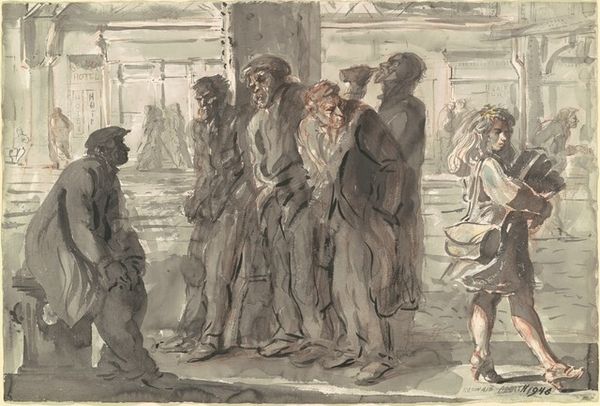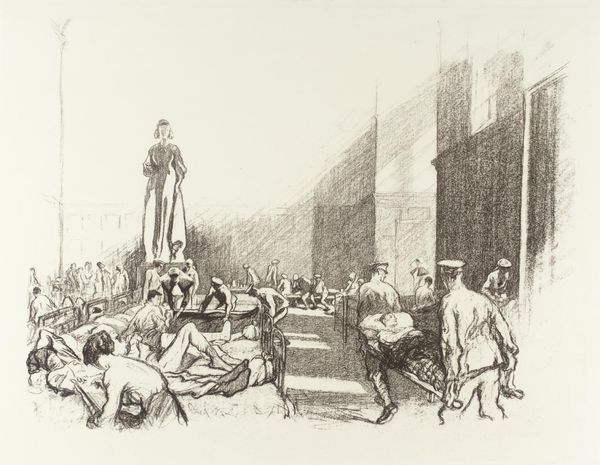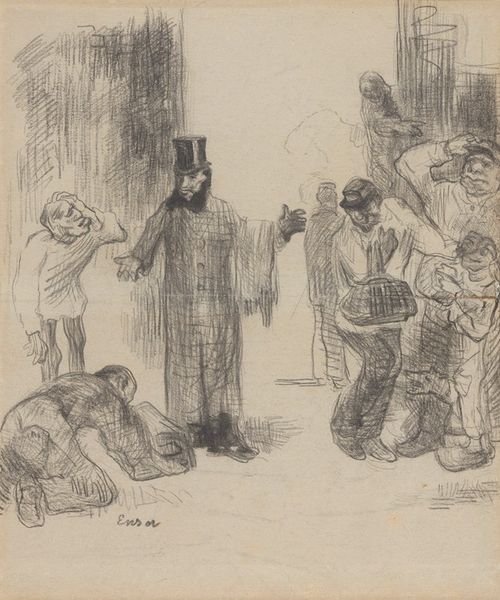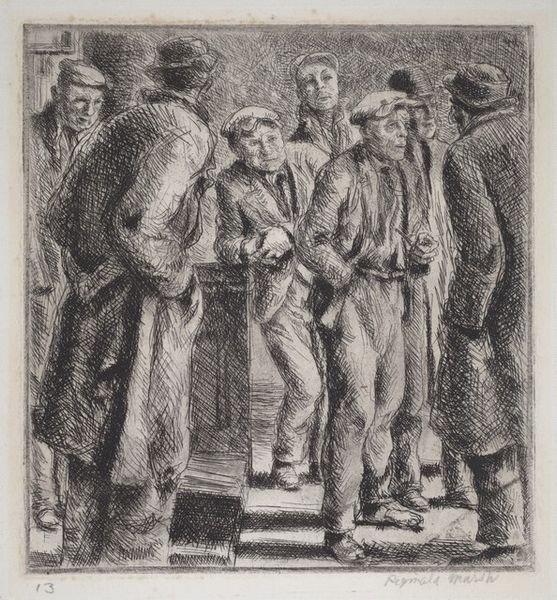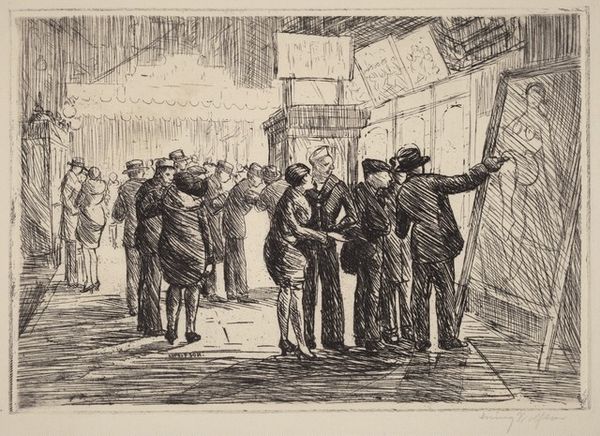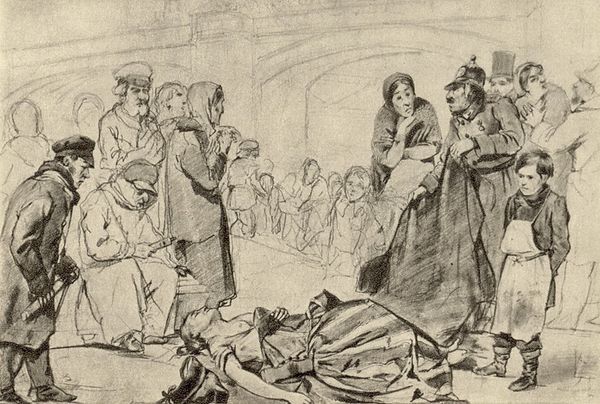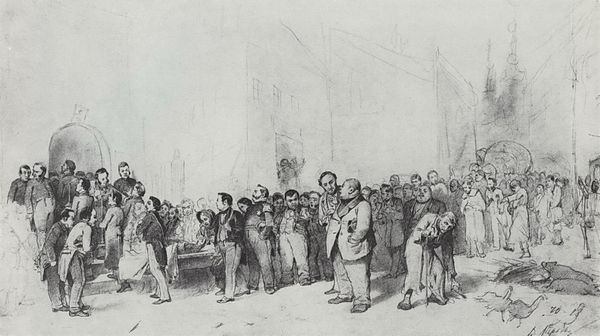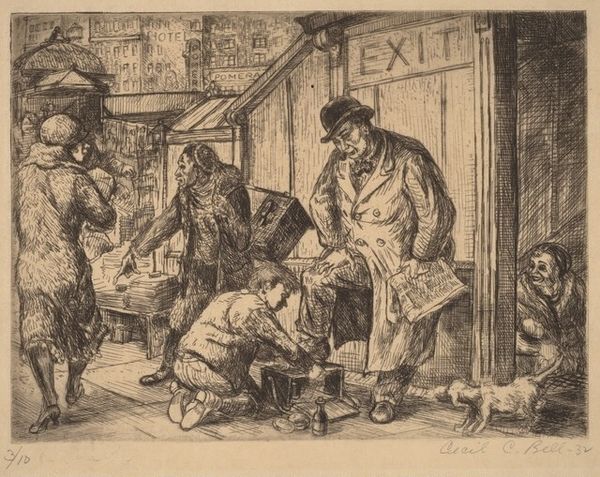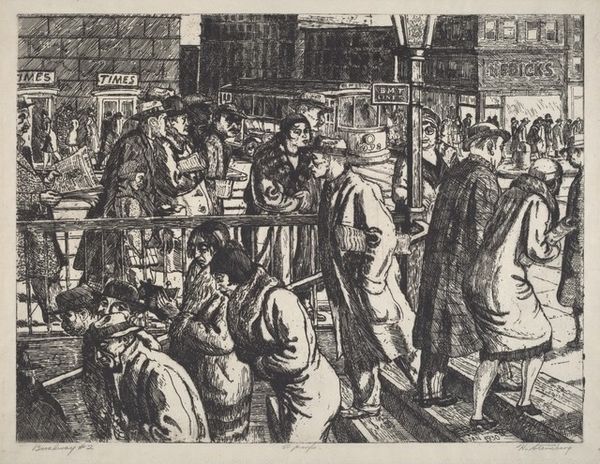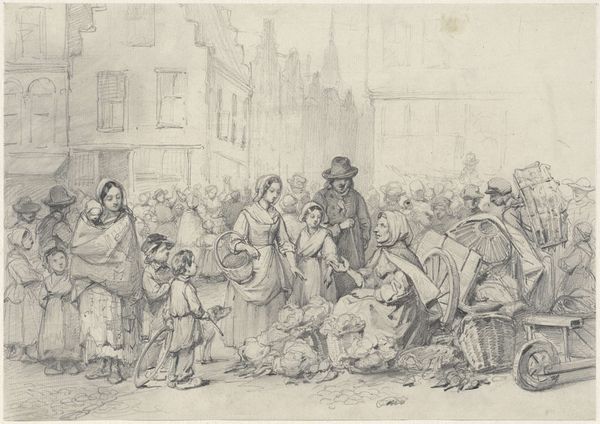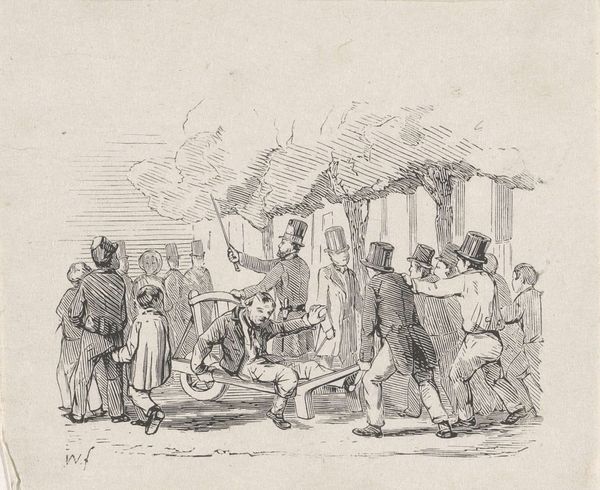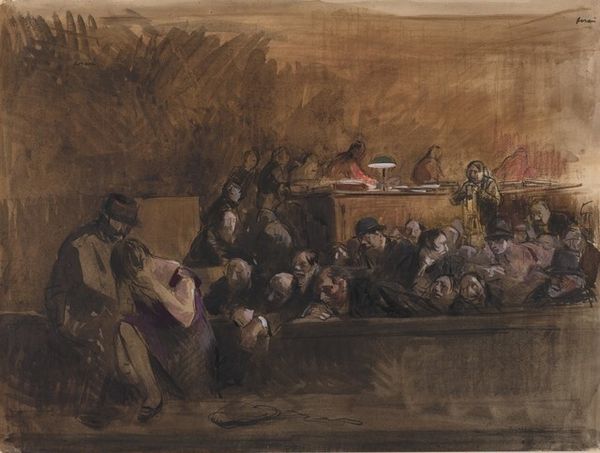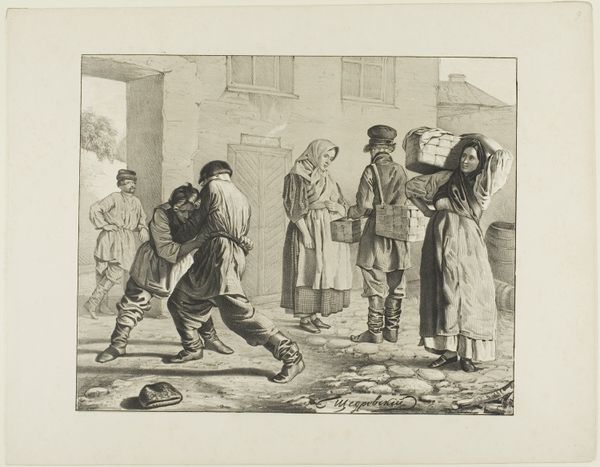![Derelicts Under the El [verso] by Reginald Marsh](/_next/image?url=https%3A%2F%2Fd2w8kbdekdi1gv.cloudfront.net%2FeyJidWNrZXQiOiAiYXJ0ZXJhLWltYWdlcy1idWNrZXQiLCAia2V5IjogImFydHdvcmtzLzA0YjU4YzRhLTM4ZmEtNDU5Mi1iY2FlLWU3ZmU2OTk4MTM4YS8wNGI1OGM0YS0zOGZhLTQ1OTItYmNhZS1lN2ZlNjk5ODEzOGFfZnVsbC5qcGciLCAiZWRpdHMiOiB7InJlc2l6ZSI6IHsid2lkdGgiOiAxOTIwLCAiaGVpZ2h0IjogMTkyMCwgImZpdCI6ICJpbnNpZGUifX19&w=1920&q=75)
drawing, ink
#
drawing
#
ink
#
cityscape
#
genre-painting
#
modernism
#
realism
Dimensions: sheet: 67.63 × 101.12 cm (26 5/8 × 39 13/16 in.)
Copyright: National Gallery of Art: CC0 1.0
Curator: This is Reginald Marsh's "Derelicts Under the El," a 1946 ink drawing. What stands out to you immediately? Editor: A stark tableau of human dejection. The grey washes and angular figures evoke a real sense of hopelessness and anonymity. Curator: Marsh was deeply invested in depicting the realities of urban life, especially during the Depression era and post-war period. He often focused on marginalized figures, imbuing them with a sense of quiet dignity while also exposing systemic inequalities. Considering this work, how does he manage to evoke a particular mood through the symbolism of this place? Editor: The elevated train line casts a long, cold shadow, a symbol of industrial alienation. The architecture looms over the figures, reducing them. This perspective creates an imbalance where the people become emblems of poverty and despair, while the structures almost suggest society's indifference. It almost suggests that he thinks structures, too, play a part in our psychic architecture. Curator: The theme of social realism that defined much of the period after WWII intersects here. The drawing challenges the American dream mythos by presenting a counter-narrative: urban poverty, unemployment, the feeling of being invisible. In terms of contemporary dialogues, what layers does his piece add in a discussion around urban decay and economic inequality? Editor: Marsh creates a cultural symbol. These aren’t portraits, really. These figures, the slumped posture, the downcast gaze, echo and amplify themes related to socio-economic struggles, that we revisit over and over through the history of images and art. It has staying power as an iconographic reference. Curator: Marsh reminds us that cities are not just economic engines, but also sites of intense human drama and profound inequality. Editor: Yes, and reminds us, through the visual language he deployed, of the endurance of certain motifs for communicating social suffering.
Comments
No comments
Be the first to comment and join the conversation on the ultimate creative platform.
